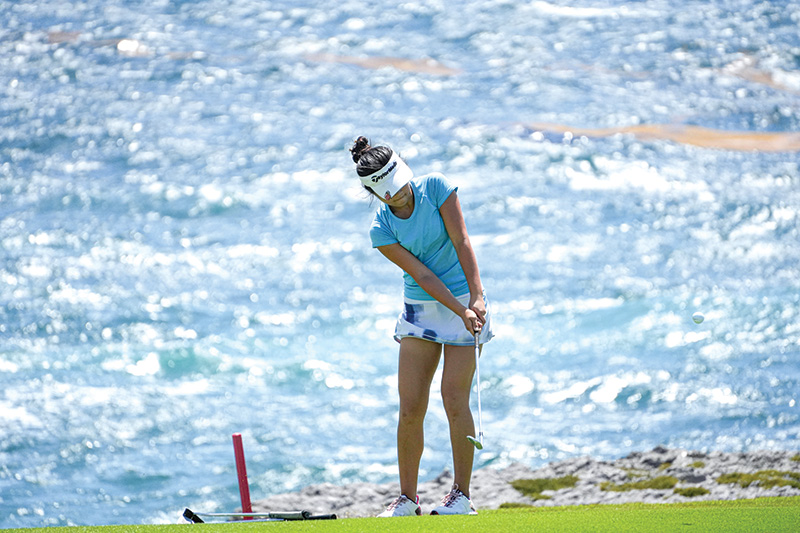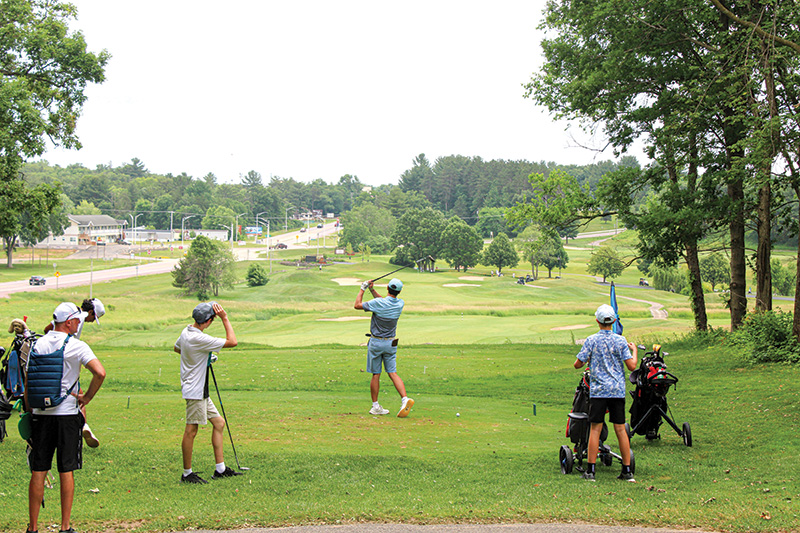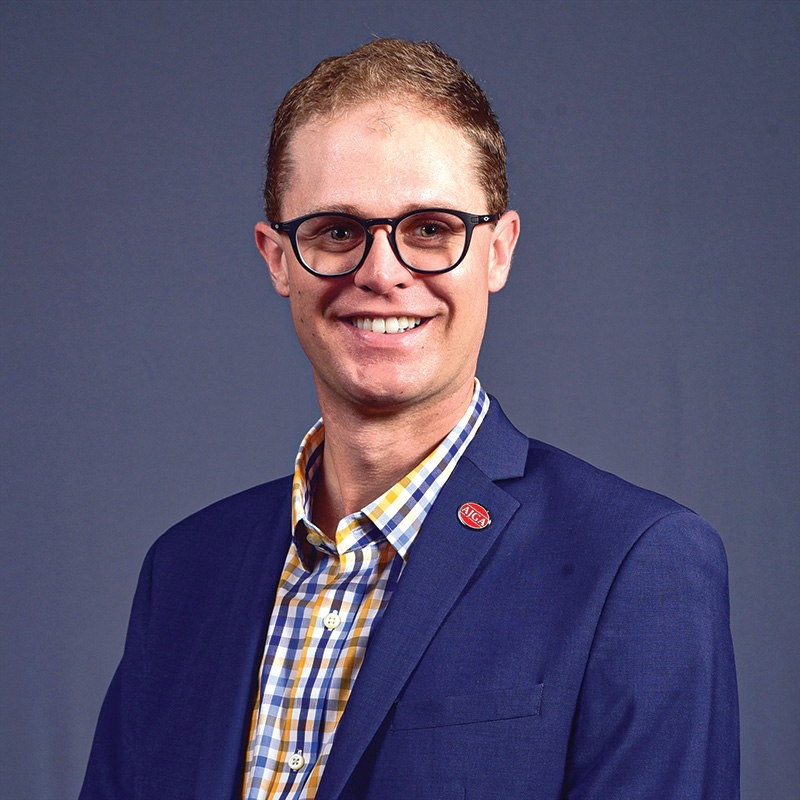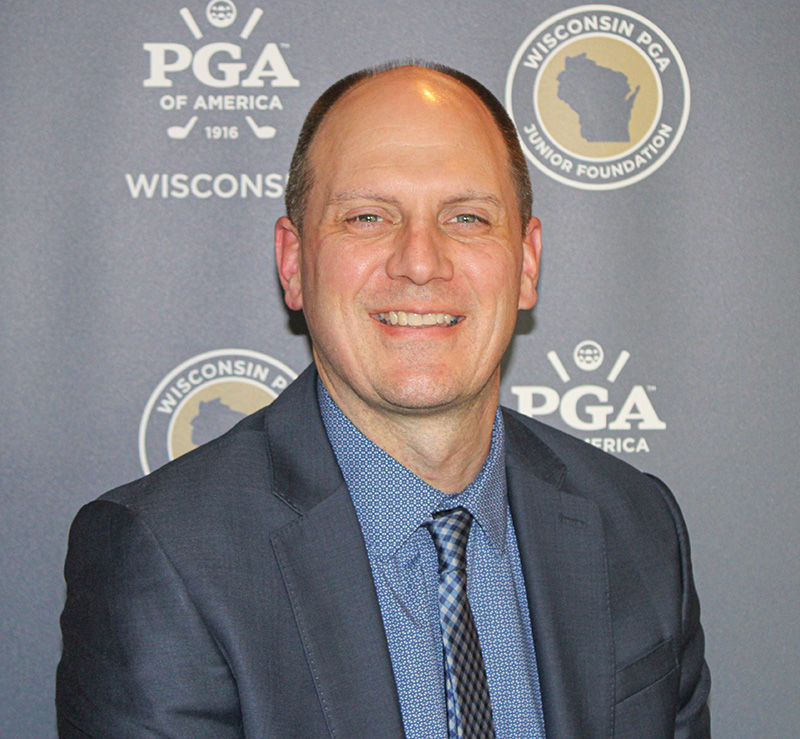
Creating golf events for youth presents a unique opportunity to introduce the sport in a fun, engaging, and accessible way. By selecting age-appropriate formats that encourage participation and camaraderie, collaborating with schools, and sourcing tailored instruction, organizers can create a welcoming environment that fosters a love for the sport.
What’s more, by emphasizing low-pressure, fun experiences, youth golf events help young players build confidence and skills, making them not just memorable but also instrumental in nurturing the next generation of golfers.
“Organizing a proper event can really support youth development and attract interest to golf,” says Patrick Cansfield, director of development for the American Junior Golf Association (AJGA), which runs approximately 150 events a year for golfers between the ages of 12 and 19. “We’re looking to attract the next generation of kids who want to play in college. If we don’t get them when they’re young, there won’t be a pipeline of players in the future.”
Having played junior golf events in his youth, Cansfield has firsthand experience of what kids enjoy about these events and has managed to design golf tournaments that he believes are better than those of the past at attracting more young golfers. “Growing up in a small town and having the opportunity to compete against some of the best in the country was an amazing experience,” he says. “Now, I help source new events all across the globe to maximize the experience for the players and parents.”
The AJGA also raises funds through events to support its foundation, helping talented young players who can compete nationally but lack the financial means to do so. This money can be used not only for AJGA events but also for tournaments hosted by the USGA, PGA of America, and independent organizations across the U.S.
Linda Gaudi, Northern Virginia tour director for US Kids Golf, organizes hundreds of events each year for kids aged six to 18, and notes that the format can be a significant factor in keeping youngsters engaged.
“The key thing about the US Kids tour is they have 14 different age divisions, so they break the players down so they are playing very close to their age group, which is important to keep the kids happy,” Gaudi says. “One thing we do is allow for a caddy, and the kids really enjoy that and feel more like a ‘real’ player.”

Fun formats
Keeping events fun and low-pressure is always a good way to keep young people interested, and that can begin with how golf tournaments are organized, especially with different formats. Frank Maynard, player engagement consultant for the PGA of America, highlights that the PGA Jr. League offers a stress-free environment where kids can enjoy playing on a team in a scramble format and build confidence on the golf course.
“It’s been shown that getting kids out there on the course and not just on the practice facility—whether it’s one hole or three holes, allows them to have fun on the golf course and develop an interest, one that hopefully will stay with them for a lifetime,” he says. “We want the game to continue to thrive and are trying to keep that funnel moving so the game continues to grow and thrive.”
Andy Landenberger, director of junior golf at the WPGA Junior Foundation, which hosts approximately 160 tournaments for young golfers throughout Wisconsin, says the best way to keep the really young players engaged is to have them join a team, playing a scramble with friends. “We give them jerseys and hats, and it’s really a lot of fun for them,” he says. “This introduces them to the game and hopefully, they will want to do more and gravitate them to a par-three event or a nine-hole event. We always work to find a tour that’s perfect for a player and fits their ability.”
Landenberger says this is important because sometimes parents will sign up their kids for a tournament that’s too challenging or over their heads. “The big thing is, we want the kids to really like it and not get discouraged,” he says. “That can keep them from really loving the game. We want to start them slow and build their confidence. Once they start to do well, they can take the next steps as they get older.”
Landenberger says that the older teens seem to enjoy the best ball format, which they also play with friends, and the younger players aspire to join as they get better. “Not everyone wants to play a single-day, stroke-play 18 holes,” he says. “You have to mix it up and offer something different.”
Choice collaborations
The AJGA works with different universities to host events and give younger golfers a sneak peek at what their future game could look like at the college level.
“It’s always a great connection when we can host on campus at a collegiate golf course that the program might use,” Cansfield says. “It gives the university great exposure but also brings the players and parents directly to campus to see if it’s a good fit for them in the years ahead.”
Gaudi often reaches out to high schools to find those interested in joining their school teams but haven’t had much experience on the greens and encourages them to join the US Kids Golf tournaments, especially the girls, to get that stroke-play experience.
“I think golf is so parallel to life, and it’s important for them to experience the winnings and losings, the frustrations and learning to get along with other players—you need that in any sort of sport,” Gaudi says. “The one thing that is really good for many of the shy girls and some of the quieter boys is that it’s just them, playing their ball, making their shot, and not having to worry about hitting something back to another player like in tennis. They can succeed on their own.”

Pro aspirations
Bringing professional golfers to events to meet the participants, sit for photos, and sign autographs is also a great way to get the younger kids fired up about the sport. “Their involvement is a way to give back to the sport that has given them so much,” Cansfield says. “We typically work with golfers at their home course where they grew up or where they currently reside and play and practise.”
For example, the AJGA holds an annual event with Justin Thomas, currently ranked fourth in the world on the PGA Tour, at the Harmony Landing Country Club in Goshen, Ken., and the pro spends much of his time talking with the youngsters.
Nelly Korda, currently ranked No. 1 on the LPGA Tour, recently hosted the top 72 girls in the U.S. at her Sarasota club for a four-day tournament, sharing her experiences and bonding with the young women. Cansfield notes this really drove up interest in female signups.
Social component
Once the golfing ends, organizing other social events for the rest of the day is a great way to keep younger players excited and help them create more positive memories about the day.
“We might have cornhole or ping pong set up at the golf course so the kids can come after their round and have a good time and not worry about the scores on the scorecard,” Cansfield says. “We also have a welcoming reception and things like a smoothie bar available throughout the week.”
Introducing social aspects and teamwork among golfers is also important when they are young. For this reason, AJGA holds a co-ed team event each year designed in a match-play format so players can get comfortable working with others. “This is a huge part of what we’re trying to do to make things fun throughout the journey,” Cansfield says.


Going the distance
A great youth event is not just about the scores but also about creating an atmosphere that attracts youngsters to explore the sport further. This involves decorating with banners, setting up a starter tent, having top officials, and offering awards.
“You have to go all-in and do things right,” Landenberger says. “We had 1,499 junior members last year, our highest we ever had, and that number continues to go up. Giving kids access to golf and a really great tournament experience is what’s helping the sport grow.”
At the end of an event, Cansfield notes that success is also measured by player and parent feedback and ensuring that people felt welcome and that there are smiles on players’ faces. And the latter is what truly makes an event feel like a hole-in-one!









